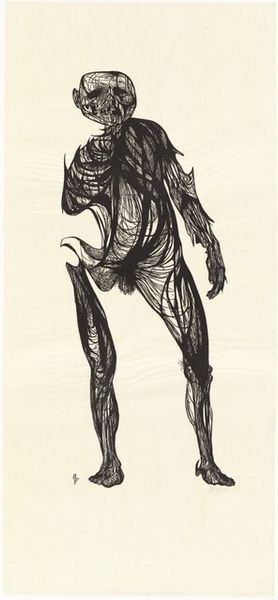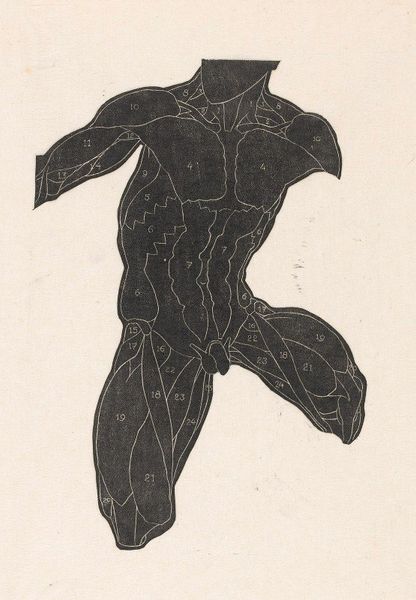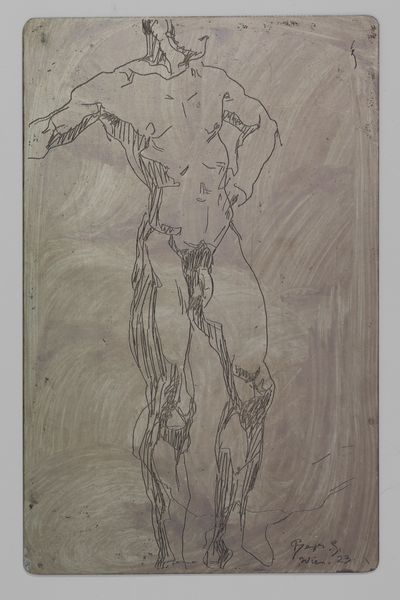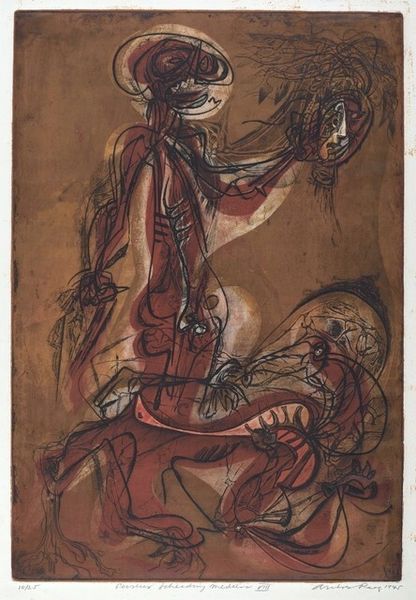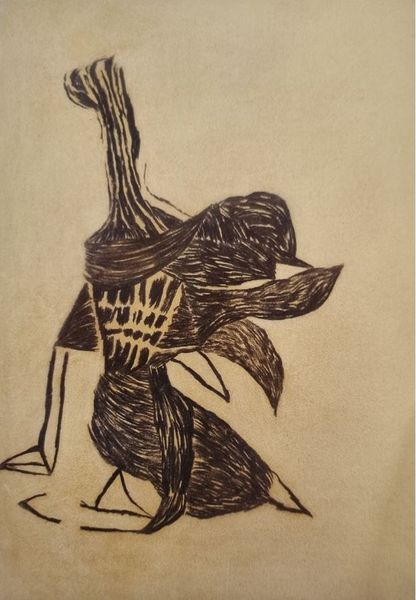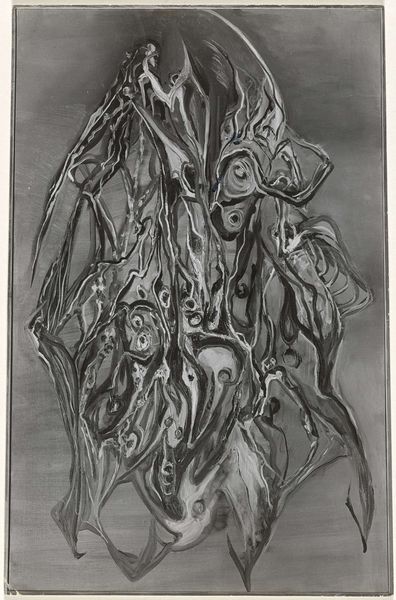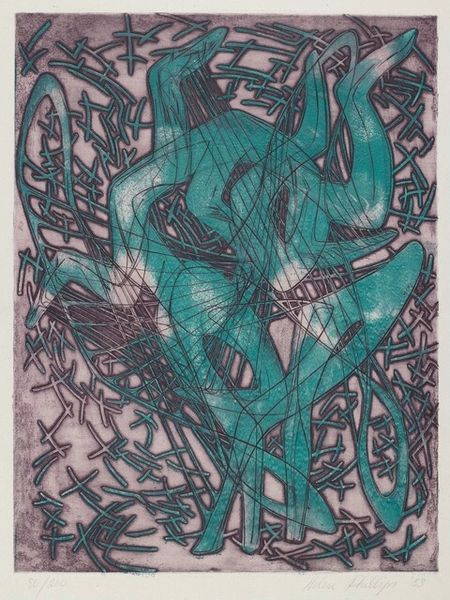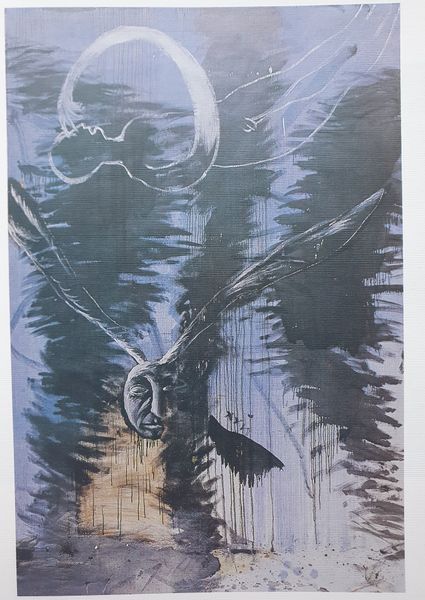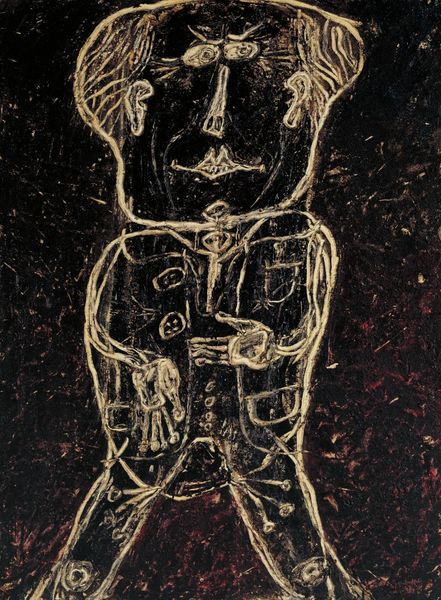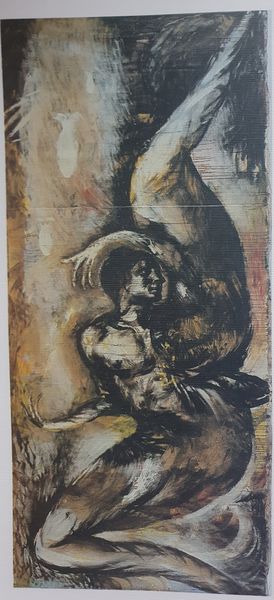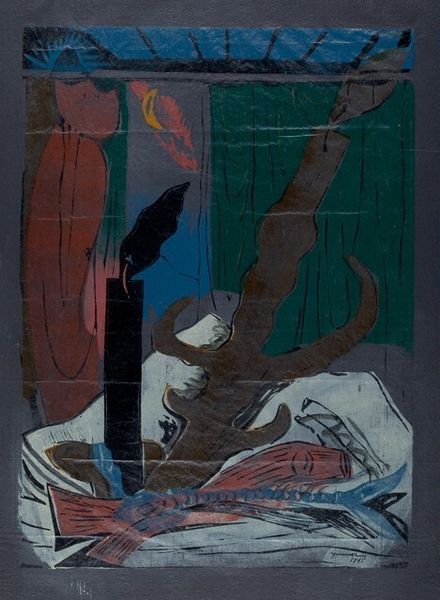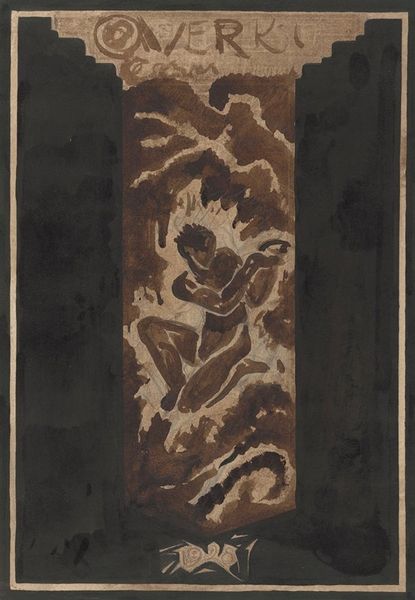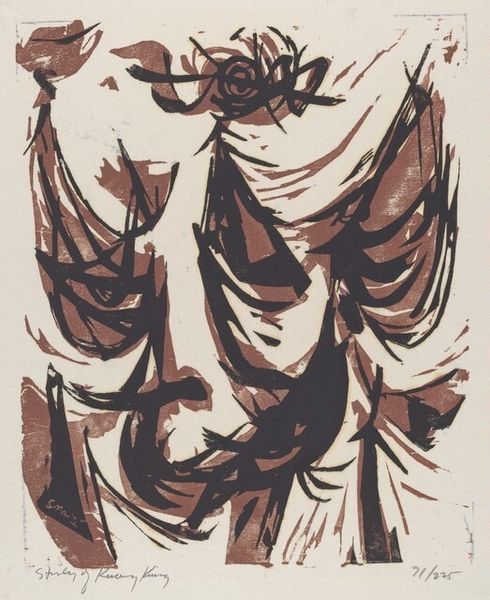
Dimensions: support: 1305 x 786 mm
Copyright: CC-BY-NC-ND 4.0 DEED, Photo: Tate
Editor: This is Sir William Orpen's "Anatomical Study, Turning Man after Michelangelo," currently at the Tate. It's quite striking, this chalk drawing on a dark background. What cultural weight do you think this image carries, referencing Michelangelo? Curator: The figure is flayed—a potent symbol across cultures. Here, the exposed musculature isn't just anatomical; it evokes vulnerability, echoing the suffering Christ from centuries of religious art. Consider the psychological impact of revealing what’s usually hidden, inviting introspection. Editor: Introspection... so, seeing ourselves in this exposed figure? Curator: Precisely. The image becomes a mirror, reflecting our own mortal forms and the shared human experience of fragility. It invites us to contemplate the layers beneath the surface, both literal and metaphorical. Editor: That’s a fascinating way to consider it. I’ll never see anatomical studies the same way. Curator: Indeed. Symbols endure because they tap into universal truths, constantly reshaped by cultural memory.
Comments
tate 8 months ago
⋮
http://www.tate.org.uk/art/artworks/orpen-anatomical-study-turning-man-after-michelangelo-t13362
Join the conversation
Join millions of artists and users on Artera today and experience the ultimate creative platform.
tate 8 months ago
⋮
This drawing was used by William Orpen to teach anatomy to his students at the Metropolitan School of Art in Dublin, where he taught from 1902 until the outbreak of the First World War in 1914. It is one of twenty large-scale anatomical drawings by Orpen in the Tate collection. The delineation of the body’s structure in red and white chalk on black paper allowed it to be visible to students when pinned up on the blackboard during teaching. Each of the drawings from this group depict the structure of the human body, its bones, the muscles that stretch over them, and the way that its limbs move. Orpen had studied life drawing at the Slade School of Art, London, under the former surgeon Henry Tonks, and this training had convinced him of the importance of understanding the underlying anatomical structure of the figure as well as its outward appearance.
